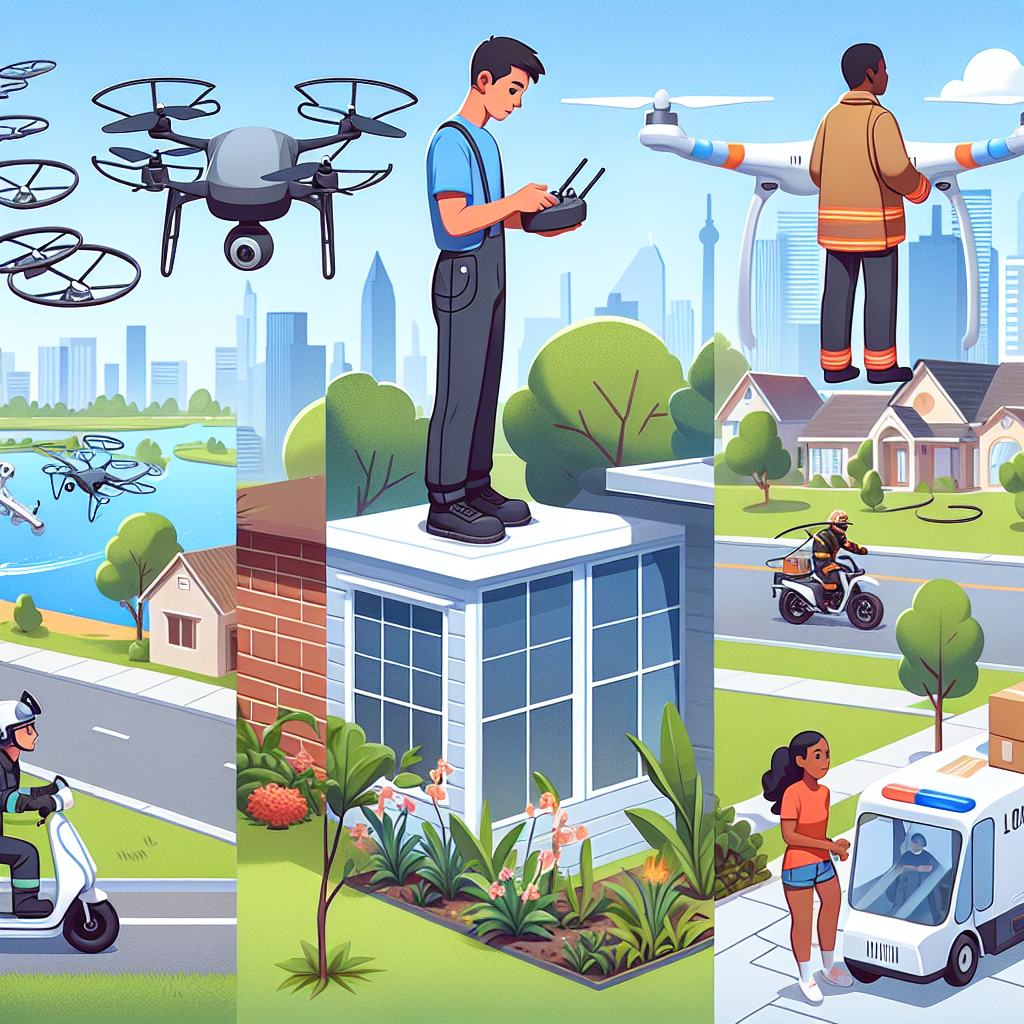-
Table of Contents
- Introduction
- Agriculture
- 1. Crop Monitoring and Spraying
- 2. Precision Agriculture
- Infrastructure and Construction
- 1. Surveying and Mapping
- 2. Inspections and Maintenance
- Photography and Videography
- 1. Aerial Photography
- 2. Film and TV Production
- Delivery and Logistics
- 1. Last-Mile Delivery
- 2. Warehouse Management
- Summary
Introduction

Drones, or unmanned aerial vehicles (UAVs), have become increasingly popular in recent years. These small, remote-controlled aircraft have a wide range of applications and are being used in various industries around the world. In Indonesia, drones are also gaining traction and are being integrated into everyday life. From agriculture to photography, drones are revolutionizing the way tasks are performed and providing numerous benefits to society. This article will explore the benefits and applications of drones in Indonesia, highlighting their impact on various sectors.
Agriculture
1. Crop Monitoring and Spraying
One of the significant applications of drones in agriculture is crop monitoring and spraying. Drones equipped with high-resolution cameras and sensors can capture detailed images of crops, allowing farmers to monitor their health and identify any potential issues such as pests, diseases, or nutrient deficiencies. This real-time data enables farmers to take immediate action, preventing crop damage and increasing overall yield.
Moreover, drones can also be used for precision spraying of fertilizers and pesticides. Traditional methods involve manual labor or large machinery, which can be time-consuming and costly. Drones, on the other hand, can precisely target specific areas, reducing the amount of chemicals used and minimizing environmental impact.
2. Precision Agriculture
Drones are also transforming the concept of precision agriculture in Indonesia. By utilizing advanced sensors and imaging technology, drones can collect data on soil moisture, temperature, and nutrient levels. This information is then analyzed to create detailed maps, allowing farmers to optimize irrigation, fertilization, and planting strategies. Precision agriculture not only increases crop productivity but also reduces resource wastage, making farming more sustainable.
Infrastructure and Construction
1. Surveying and Mapping
In the field of infrastructure and construction, drones are revolutionizing surveying and mapping processes. Traditional methods involve manual measurements and ground-based equipment, which can be time-consuming and labor-intensive. Drones equipped with high-resolution cameras and LiDAR sensors can quickly capture aerial images and create accurate 3D models of terrain, buildings, and construction sites. This data can be used for site planning, monitoring progress, and detecting any potential issues, saving both time and costs.
2. Inspections and Maintenance
Drones are also being used for inspections and maintenance of infrastructure assets such as bridges, power lines, and pipelines. These tasks often require human workers to access dangerous or hard-to-reach areas, posing risks to their safety. Drones equipped with cameras and thermal imaging sensors can inspect these structures from a safe distance, identifying any defects or anomalies. This proactive approach allows for timely maintenance and reduces the risk of accidents or failures.
Photography and Videography
1. Aerial Photography
Drones have revolutionized the field of photography and videography by providing a unique perspective from the sky. In Indonesia, drones are widely used for capturing stunning aerial shots of landscapes, events, and real estate properties. The ability to fly at different altitudes and angles allows photographers and videographers to create captivating visuals that were previously only possible with expensive equipment or helicopters. This has opened up new opportunities for creative expression and storytelling.
2. Film and TV Production
In the film and TV industry, drones have become an essential tool for capturing dynamic and cinematic shots. They offer flexibility, mobility, and cost-effectiveness compared to traditional methods such as cranes or helicopters. Drones equipped with high-quality cameras and stabilization systems can smoothly capture action sequences, chase scenes, or breathtaking panoramas. This technology has revolutionized the way films and TV shows are produced, enabling filmmakers to bring their visions to life more efficiently and creatively.
Delivery and Logistics
1. Last-Mile Delivery
Drones are increasingly being explored as a solution for last-mile delivery in Indonesia. With its vast archipelago and challenging terrain, delivering goods to remote areas can be time-consuming and costly. Drones offer a faster and more cost-effective alternative, especially for lightweight and urgent deliveries. Companies like e-commerce platforms and medical suppliers are experimenting with drone delivery services, ensuring timely access to essential goods and medical supplies in hard-to-reach locations.
2. Warehouse Management
Drones are also being utilized in warehouse management to optimize inventory tracking and logistics operations. Autonomous drones equipped with barcode scanners or RFID readers can efficiently navigate through warehouses, scanning and identifying products. This automation reduces human error, speeds up inventory management, and improves overall efficiency. Drones can also be used for stocktaking, reducing the time and resources required for manual counting.
Summary
Drones have become an integral part of everyday life in Indonesia, offering numerous benefits and applications across various sectors. In agriculture, drones enable farmers to monitor crops, spray fertilizers, and optimize farming practices through precision agriculture. In infrastructure and construction, drones revolutionize surveying, mapping, inspections, and maintenance processes, saving time and costs while ensuring safety. In photography and videography, drones provide a unique aerial perspective, enhancing creativity and storytelling. In delivery and logistics, drones offer solutions for last-mile delivery and warehouse management, improving efficiency and accessibility.
As the technology continues to advance, drones are expected to play an even more significant role in Indonesian society. However, it is crucial to address regulatory challenges, privacy concerns, and safety measures to ensure responsible and ethical drone usage. With proper regulations and guidelines in place, drones have the potential to transform industries, improve livelihoods, and contribute to the overall development of Indonesia.
